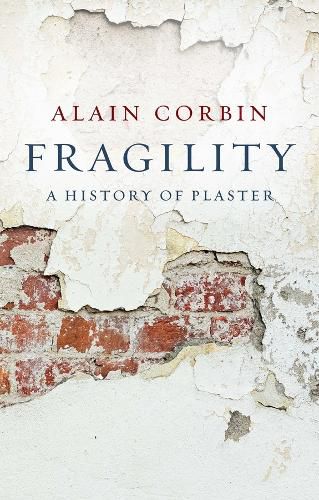Readings Newsletter
Become a Readings Member to make your shopping experience even easier.
Sign in or sign up for free!
You’re not far away from qualifying for FREE standard shipping within Australia
You’ve qualified for FREE standard shipping within Australia
The cart is loading…






The distant past is commonly characterized in terms of dominant materials of the time - the Stone Age, the Bronze Age, the Iron Age, etc. Since the dawn of writing, however, characterizing eras in terms of materials has fallen by the wayside. And yet materials have continued to exert a powerful influence on our perception of time and our collective imagination, whether it be iron in the late 19th and early 20th centuries or plastic today.
Viewed from this perspective, France in the period from 1815 to 1855 could be seen as the half-century of plaster. After the French Revolution, plaster was used for a great variety of things: building, moulding, sculpting, decorating. Cheap and easy to use, plaster was everywhere, from Napoleon's death mask to household ornaments, from walls and ceilings to elaborate mouldings. Plaster was king - but a fragile king that easily crumbled and fell apart. The age of plaster was also the reign of the ephemeral and the transient, the vulgar and the eclectic, and the men and women of the time struggled to maintain stability and continuity with the past. In the space of a few decades, no fewer than seven political regimes succeeded one another. Plaster, symbol of the ephemeral, the flaking and the vulgar, is the material which defines the first half of the nineteenth century.
Written with his characteristic brilliance and eye for unconventional topics, Alain Corbin's highly original exploration of the role of plaster in history will be of interest to a wide readership.
$9.00 standard shipping within Australia
FREE standard shipping within Australia for orders over $100.00
Express & International shipping calculated at checkout
The distant past is commonly characterized in terms of dominant materials of the time - the Stone Age, the Bronze Age, the Iron Age, etc. Since the dawn of writing, however, characterizing eras in terms of materials has fallen by the wayside. And yet materials have continued to exert a powerful influence on our perception of time and our collective imagination, whether it be iron in the late 19th and early 20th centuries or plastic today.
Viewed from this perspective, France in the period from 1815 to 1855 could be seen as the half-century of plaster. After the French Revolution, plaster was used for a great variety of things: building, moulding, sculpting, decorating. Cheap and easy to use, plaster was everywhere, from Napoleon's death mask to household ornaments, from walls and ceilings to elaborate mouldings. Plaster was king - but a fragile king that easily crumbled and fell apart. The age of plaster was also the reign of the ephemeral and the transient, the vulgar and the eclectic, and the men and women of the time struggled to maintain stability and continuity with the past. In the space of a few decades, no fewer than seven political regimes succeeded one another. Plaster, symbol of the ephemeral, the flaking and the vulgar, is the material which defines the first half of the nineteenth century.
Written with his characteristic brilliance and eye for unconventional topics, Alain Corbin's highly original exploration of the role of plaster in history will be of interest to a wide readership.